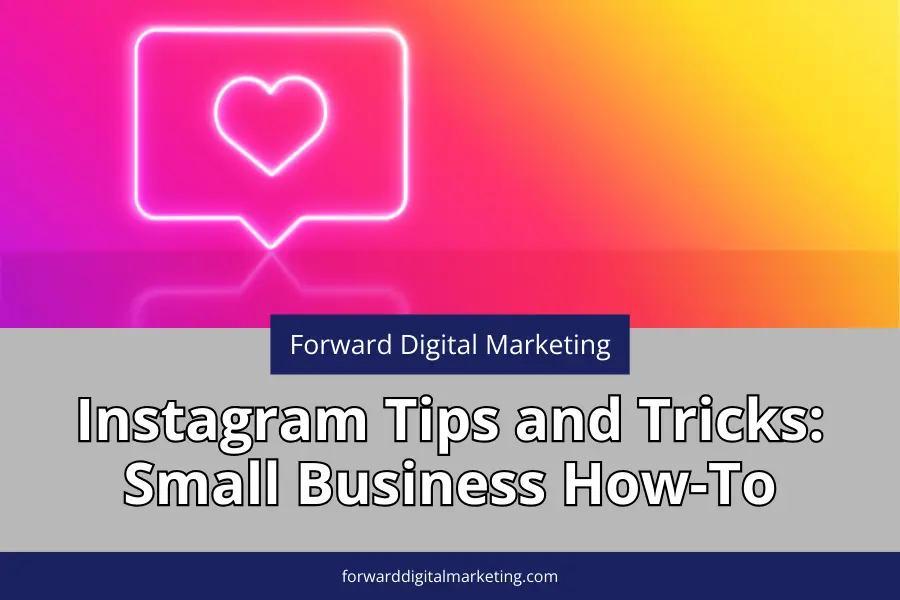Your cart is currently empty!
Category: Optimization
-
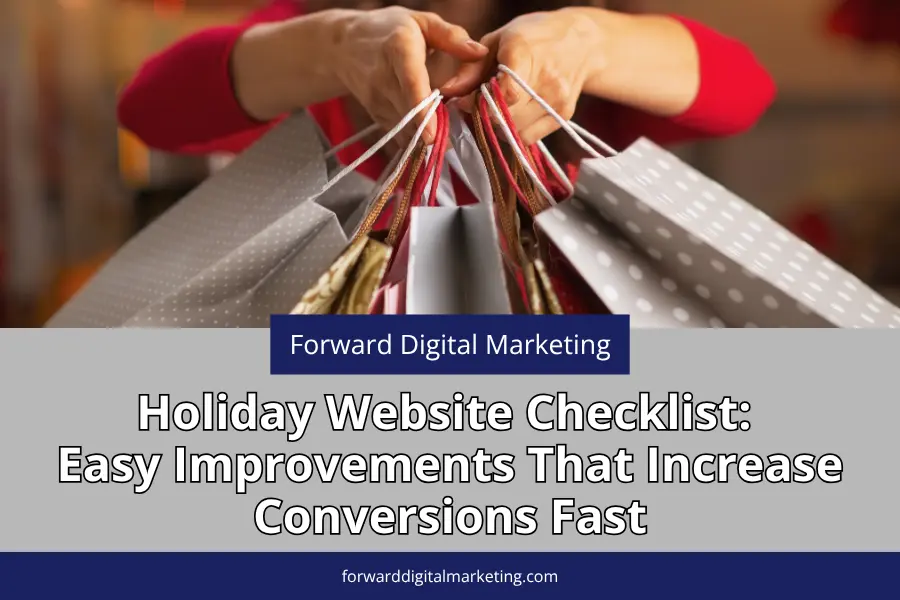
Holiday-Ready Websites: How to Capture More Seasonal Sales (Without Rebuilding Your Site)
The holiday season moves fast, and online shoppers move even faster. They’re searching for the perfect gift, comparing options, and making snap decisions. The real question is: Will your holiday-ready website convert that urgency into sales or send buyers somewhere else?
During the holidays, attention spikes, but attention doesn’t pay the bills. Conversions do. This season isn’t just busy: it’s competitive. As shoppers search for the fastest, easiest way to buy or book before the end-of-the-year rush, small businesses that show up with clarity and confidence will win the sale. A website that makes customers wait and wonder? Those are easy to abandon. Here’s how to turn visitors into buyers, bookers, and subscribers before the busy season hits, without a full holiday-ready website redesign.
In this article, we will:
- Boost your holiday lead capture while customer intent is at its peak
- Guide shoppers directly to seasonal offers where they’re most likely to click
- Remove confusion from your buyers journey with clear CTAs and intuitive navigation
- Build instant trust with first-time customers through social proof and up-to-date business info
- Eliminate checkout and booking friction before it costs you sales
Cart abandonment spikes to 70–85% during the holidays. Customers sometimes need a gentle reminder or clear motivation to complete the purchase.
Turn Browsers Into Buyers with Seasonal Lead Capture
During the holidays, the intention to make a purchase is high, and your website needs to meet the moment. To capitalize on that momentum, the goal is to provide time-sensitive offers or items that drive customers to stay on your site and sign up for future correspondence. Because of this, using a variety of tools is key, and employing more than one at a time is the most effective way to make the most of each visitor’s time on your site.
Smart seasonal lead magnets for Retail:
- Gift guides or product quizzes
- Exclusive holiday coupons
- Early access sign-ups
- Downloadable buyer checklists
Smart seasonal lead magnets for Restaurants:
- Gift guides or product quizzes
- Exclusive holiday coupons
- Early access sign-ups
- Downloadable buyer checklists
Smart seasonal lead magnets for Service Providers:
- Gift guides or product quizzes
- Exclusive holiday coupons
- Early access sign-ups
- Downloadable buyer checklists
Quick Wins that you can do on your site right now!
- Add a short “Holiday Deals” email form to your homepage
- Embed newsletter signup in blog content and product pages
- Offer promo codes in exchange for sign-ups
Small touches, such as urgency language (e.g., “Limited Time!” or “Ends Sunday!”), dramatically boost conversions during peak shopping weeks. Placing little reminders and prompts throughout the site is a quick and easy way to capture leads, but remember to put the cues in common-sense places to avoid driving your potential customer away with annoying pop-ups or flashy pushes to capture their information. Building webpages and full websites does take finesse, and if you are feeling overwhelmed with the task, let us help!
Serve Seasonal Offers Where Customers Are Looking
If visitors have to hunt for holiday deals, they aren’t going to stay long. They are going to “bounce.” To help retain customers on your site, consider adding a “Holiday Hub.” This could be a temporary landing page or menu item that can be linked everywhere!
Where to add the link?
- Top navigation bar
- Home hero banner
- Pop-ups and slide-ins
- Social + email promotions
Then align each offer to clear audiences:
- Under $25 stocking stuffers
- Gifts for parents, teachers, coworkers
- Local booking specials
- Last-minute digital gift certificates
Putting the right offer in the right place creates more clicks that turn into carts. Need specific industry ideas? Let’s consult, and FDM can not only audit your site to find those perfect, underutilized spaces, but also design and build your new landing page!
Clear CTAs + Obvious Buying Paths = More Revenue
A common conversion killer: customers don’t know the next step. If you create vague CTAs (call-to-actions), then customers are going to have to connect more dots than they want to. Time is precious to potential customers, so if they have to crawl the page to find an actionable item, chances are they are probably going to leave. As easy as it is to create seasonal landing pages to make finding the deals easy, adding buttons and links throughout your content allows customers to easily connect to you or purchase your product or service.
Holiday CTA upgrades:
- Replace weak text like “Learn More” with “Buy Now,” “Reserve Pickup,” or “Add to Cart“
- Add sticky “Shop Holiday Specials” button, especially on mobile
- Use contrasting colors for checkout paths so the stand out
- Shorten the number of clicks to purchase (ALWAYS 3 steps or fewer)
Even service-based small businesses should push direct action:
- “Book by Dec 15th for guaranteed holiday installation!”
Customers shouldn’t need to think. They should just be able to click. It not only makes the experience easier for them but also increases conversions by supporting impulse decisions and time-sensitive motivation.
Build Trust Fast with Social Proof + Accurate Info
New customers don’t know you yet, so trust becomes a quick deciding factor. Leverage your proof-of-work, loyal customers, and expertise to build that bridge and close the sale.
Essential trust builders:
- Real customer reviews
- Photos of products and the people behind the business
- Video testimonials (short + genuine)
And the fastest way to boost confidence? Getting your Google Business Profile polished!
Update your Google Business Profile
- Holiday hours
- Seasonal photos
- Booking buttons
- Updated services/products
Staying accurate on Google = customers trust you before they click.
Remove the Friction Before the Rush Hits
Today’s fast-moving world finds people more impatient, and during the holiday stress, patience is even shorter. We don’t blame them! We are them. Packed schedules and holiday budgets make time even more precious, so your website needs to be at peak performance to avoid losing the customer. Use this guide to make sure your site is technically up to snuff. Below are the other journey hurdles you should be considering:
If your site is:
- Slow to load
- Hard to navigate on mobile
- Confusing at checkout
- Missing secure payment badges
- Lacking multiple payment options
…holiday shoppers will leave.
Instead of rebuilding from scratch, focus on fixing the chokepoints:
✅ Improve mobile usability
✅ Speed up load times
✅ Simplify forms and checkout
✅ Fix any broken or outdated pages
✅ Utilize trusted and diverse checkout methodsEven small upgrades can protect big holiday revenue.
Small Holiday Tweaks = Major Sales Wins
The viewers of your site are ready to buy. That’s how they made it to you! Your website just needs to help them finish the job.
By focusing on:
- Seasonal Visibility
- Frictionless Navigation
- Clear Calls to Action (CTA)
- Accurate Local Information
- and Trust-Building Elements
You turn holiday browsers into loyal, returning customers. Before the season hits, Forward Digital Marketing can fully optimize your site.
Want a Quick Win? Do a 15-Minute “Holiday Readiness Check”
Want us to handle the changes for you?
Let’s make sure this season is your most successful yet.
-

Google Business Profiles: The Secret Weapon for Successful Small Businesses
What’s the first thing you do when you’re thinking about trying a new restaurant? Or when your toilet won’t stop running and you need a plumber, fast? You grab your phone and open Google. And in the top right corner – the Google Business Profile.
Imagine you search “nice restaurants near me,” and two options pop up. Both have a Google Business Profile. The first has a decent name, a few reviews, and one blurry photo of the dining room. Nothing special.
The second? Same kind of restaurant, similar menu, but this one immediately stands out. Why? Because before you’ve even clicked, you can see glowing reviews, crisp photos of the food and atmosphere, a phone number, and a “Reserve Now” button ready to go. You don’t even think twice! You pick the second one with confidence.
Was it your business that was chosen? Or where you overlooked because of an incredibly simple mistake a lot of small businesses overlook – The Google Business Profile (GBP).
If you’re not showing up where your customers are searching, you’re invisible, no matter how amazing your business is.
What a Google Business Profile Actually Does (and Why It Matters)
A Google Business Profile (GBP) is a business’s official Google listing. Before 2022, GBP was the Google My Business, but after a rebrand and refresh, the GBP gives small business owners more tool and control their brand and information.
A well optimized Google Business Profile allows you the business owner to:
- Manage Information about your business. This can be your website and physical address, to your services and products. It allows potential customers to quickly find the important details about you and your small business.
- Interact with new and old customers easily with your GBP. Not only can you read and respond to any online reviews left by customers, you can also add posts to keep your current base up-to-date with any new offerings or events. It’s like a small social media feed that can offer online viewers quick glances at your living business.
- Understand and maximize metrics by digging into important data that your Google Business Profile creates for you. With your custom GBP, you can see how customers find you through search keywords, see how they navigate to your profile, and track campaigns to determine how to best use your resources to expand your customer base.



Use these checklists to audit or build your Google Business Profile
5 Common GBP Mistakes That Cost You Local Traffic
It’s so easy to overlook your own Google Business Profile, but others looking for you (or your competitor) easily find it. Here are five common things you can correct to capture those eyes.
- Incomplete profiles – no hours, no description, no HIGH QUALITY photos
- It’s an easy fix! Fill every field out. Google rewards complete profiles by ranking them higher in searches.
- Inconsistent NAP info – that’s Name, Address, Phone
- Match your NAP information on all websites, GBP, and directories. If it’s hard or confusing to find, customers will stop looking.
- Neglecting Reviews – don’t just ask, respond
- If someone took their time to leave a review, you can take the time to respond (yes, even the bad ones).
- Poor Photos – outdated, dim, or irrelevant images scare people away
- Add bright, current photos of your location, staff, and work.
- No Updates or Posts – Google is social media too
- Add life to your profile by adding current promos, new products, or events weekly.
How to Optimize Your GBP for Local SEO
Google Business Profiles are free and an amazing resource, but you need to use it as another smart tool. Optimize it for top performance, allowing your small business to shine in the busy digital space.
- Add primary & secondary categories strategically.
- Use keywords naturally in your business description.
- Upload videos and FAQs.
- Enable messaging and booking links.
- Encourage regular check-ins and photo uploads.
By building your listing for the local SEO (search engine optimization), you are generating organic leads. Creating a well rounded and clear Google Business Profile encourages the search engine to prioritize your listing, setting yourself up for more views. Don’t let those viewers (and potential customers) be discouraged to find an old, outdated profile.

Have You Googled You Recently?
Google gives you the platform and access to a local audience looking for small businesses just like you – you just have to fill it in!
Check your Google Business Profile today! Look it over for potential improvements. No neglected profile is perfect! It should be checked weekly.
It might feel like just another thing on your small business to-do list, but your Google Business Profile is one of the most valuable tools you have. Forward Digital Marketing can help lighten your load and build a fully optimized profile that helps customers find, and choose, you.
-

5 Costly Website Mistakes for Small Businesses That Drive Customers Away (and How to Fix Them Fast)
Common website errors that drive customers away
The holidays are around the corner! While you’re preparing for more customers your website mistakes might be quietly working against you. Yet for a small business, a bad website doesn’t just look unprofessional, it actively drives customers away. It’s important to be able to audit your website with quick confidence, because online shopping is at an all-time high, and customers expect a seamless experience. Read on to learn the top five website mistakes that are costing you money. Plus, learn how to fix them before the busiest season of the year!

1. Your site takes forever to load
First, let’s start with the most common website mistakes that turn visitors away before they even see your site: speed and performance. Slow sites lose visitors in seconds and in a world of short attention spans and on-demand service, a delay of even 2–3 seconds can cut your conversion rate in half!
Website speed, or performance, refers to how quickly a browser can fully load website pages, and poor speed results in poor conversion rates. One study found that decreasing their homepage load time by 100 milliseconds resulted in a 1.11% increase in session-based conversion. Another, looking at Walmart, discovered that improving page load time by even one second increased their conversions by 2%. An even more impressive improvement happened for one retailer who experienced a 12-13% increase in sales after cutting its page load time in half. A faster site makes customers happier. It also helps you rank higher in Google.You can use this great tool to audit your website. The bottom line: speed matters, and optimizing your website is key to optimizing your conversion rates.
–
Fix: Invest in reliable hosting and speed optimization.
2. Your site isn’t mobile-friendly
Even if your site loads quickly, it won’t matter if visitors can’t use it easily on their phones. More than half of online traffic now comes from mobile: a whopping 62.4%. If your site looks broken or is hard to navigate on a phone, you’re losing sales every day.
For better or worse, mobile isn’t going anywhere. In 2005, only 6.1% of traffic was from mobile users, but within 10 years it grew to almost 40%. Now, in 2025, mobile traffic makes up the majority of users, and that number will only continue to rise. If your site isn’t mobile friendly, you’re losing easy sales. According to Optinmonster (2022), 77% of consumers purchase impulsively, and 70% of them make purchase decisions on their mobile devices within the first hour of seeing a product. If your website isn’t easy to scroll and navigate, consumers will quickly lose interest before ever completing their purchase with your small business.
–
Fix: Update to a responsive design that adapts to any screen size.

3. Customers can’t find what they need
Of course, a mobile-friendly design is only part of the picture — customers also need to find what they’re looking for without getting lost. Burying your phone number, address, or menu behind too many clicks creates friction. If a customer struggles, they’ll bounce to a competitor.
In a recent survey, 50% of internet users were able to predict where relevant content would appear in a standard website navigation structure.. While that might sound positive, if only half of your visitors can find the information they’re looking for, it’s actually a major problem. A disorganized website can lead to higher bounce rates and less time on your site, which ultimately lowers conversion rates.
–Fix: Place contact info and key calls-to-action front and center.
4. Outdated design signals “out of business”
Clear navigation helps, but if your site looks like it hasn’t been touched in years, visitors may still click away. Websites that look stuck in 2010 send the wrong message: if you don’t update your website, can customers trust you to keep up with their current needs?
The U.S. Chamber of Commerce found in a recent study that 55% of a brand’s first impressions are visual. If your website fails to meet that expectation from the start, you’re already losing potential customers. Updating your brand doesn’t have to be expensive, but it does have to be thoughtful. You need to understand your customer base better than anyone else in order to build a site that is visually appealing to your specific audience. Be wary of chasing trends that overhaul your website but ultimately only last for a small duration, leading to even more work.
To help you audit your website’s visual evolution use The Wayback Machine! If your site hasn’t changed visuals in 5 years, it’s time for a refresh.
–
Fix: A modern, clean design builds credibility instantly.
5. No clear call-to-action
Finally, even the best-looking site won’t drive results if you don’t tell visitors what to do next. Your website isn’t just decoration. If you’re not guiding visitors toward booking, calling, or buying, you’re leaving money on the table.
We can all agree that full-screen pop-ups are extremely annoying, but that’s not the only way to gather leads, close a sale, or drive customers to a specific page. Small pop-up windows in the sidebar, relevant hyperlinks within content, and easy-to-find “Buy Now” buttons show customers they’re expected to take action on your site. Remember: calls to actions (CTAs) allow you to collect valuable information from consumers so you can follow up with educational materials, sales promotions, and updates about your company. There’s no need to chase down consumers when they’re already on your site.
–
Fix: Add clear buttons and forms on every page.
Don’t let your small website mistakes cost you customers. By fixing these five common issues — slow load times, poor mobile design, confusing navigation, outdated visuals, and missing CTAs — you’ll keep visitors engaged, build trust, and convert more sales. Every second matters online, and even one weak spot can send customers to your competitors. Go audit your site today and look for these 5 website mistakes; even one small fix can make a big difference. If you discover gaps, Forward Digital Marketing builds websites designed to convert, so you can focus on running your business while your site does the heavy lifting. Ready to see what your website could do for your business? Contact us today for an expert eye to look over your site!

-
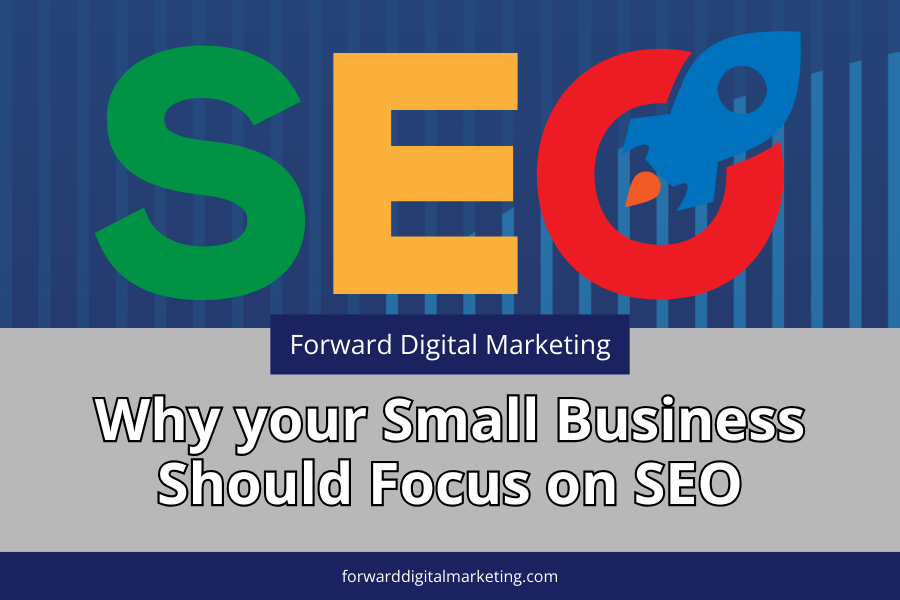
Why your Small Business Should Focus on SEO: Search Engine Optimization
Hey Forwardies,
It is time to learn why your Small Business should focus on SEO. It is essential to helping your Small Business grow. Your soon-to-be customers can’t choose you if they can’t find you!
Think of it this way. What do we all do when we are looking for a solution to a problem? We Google it! It has become our first instinct! Search Engines have the answers, and you want to be one of those answers! Search Engine Optimization (SEO) can help you make that happen and we are going to tell you how.
VISIBILITY is key!
The first and most important step is being visible when consumers go to search engines looking for what you can offer! Regardless of what you are selling you want to be found.
How does SEO help? The answer is simple…. Keywords. Keywords are what link the consumers search to your website. For example, Let’s say someone is searching for a new necklace. If necklace is a keyword on your website it would alert search engines that your website sells or discusses jewelry. Now that the search engine knows that your website is relevant to the consumer’s search, they will index your site and display it somewhere in the search results.

Rank HIGH when it comes to PAGE AUTHORITY and DOMAIN AUTHORITY and build the Credibility of your Business.
Now that we have discussed how Keywords make you visible in the search results, Let’s talk about the importance of where you rank on those results. You obviously want to be listed on the first page of the search results so that it is more likely that you are seen by the consumer. Keywords are very important, but SEO isn’t just about Keywords.
Page Authority and Domain Authority also impact where you show in the search results. Think of these two things as a ranking system by search engines to determine if you are a trusted and/or influential resource.
Page Authority ranks a single page on your website and Domain Authority ranks your whole website. The higher your ranking, the higher you are in the search results.
The fact of the matter is when you appear higher on the search engine results consumers automatically consider you a more credible source than those ranked lower than you.
Out rank your COMPETITORS!
The internet is vast and there are so many businesses like yours hoping they will show up in that search. Of course, you want to be the business showing up first in the results. We want that for you too. If other Small Business are using SEO to their advantage and you aren’t, then you are already a step behind. A good SEO strategy can help you out rank your competitors.
If you are looking to expand your reach, SEO is crucial in making that happen. Like we discussed before Keywords help consumers find your website. By cultivating a list of keywords that describe you and your business you will reach the audience that is also looking for you!

Expand your REACH and attract RELEVANT USERS!
Reaching more people means more visitors on your website. The more visitors you have the better you start to look in the eyes of Search Engines. So not only do you get added traffic, which is great for your business, but you are also improving your authority. This will help you show up higher in the search results next time.
Grow your WEB TRAFFIC, ENGAGMENT, & CONVERSIONS!
There is no better way to grow your website traffic than SEO! Now, you are thinking…. I use Social Media to build my website traffic. Why do I also need SEO? The simple answer is Social Media will only get you so far. Social Media Management is important but you are limited to only those who interact on social media and even then, you might not find the right audience.
The whole point of having a website is so consumers can find you and learn about you, your Business, and what products you have to offer. Of course, you also hope they will make a purchase but first they need to find you. This is where SEO comes in to help you build your organic search engine traffic.
The more Keywords you use -> the more you show up in search engines -> the more organic website traffic will increase.
Also keep in mind that you OWN your website and YOU control all the content. You don’t own your social media account and it my not always be around. You want to make sure your website is getting that organic traffic in case social media fails.
Exert influence on the BUYING CYCLE!
I don’t know about you but before I buy something I like to do my research. Where is research done these days? Search Engines! By using SEO to make sure you are showing up in those research results you can impact the buying cycle.
This is where things like blogs come into the picture. Now I know not everyone wants to write a blog, but it is great content marketing. Blogs are a great way to get keywords on your website, tell your audience about your products and services, and show your expertise in your business. Once you use SEO to get them to your website you can use the blog to influence their buying decisions.
The best EXPERIENCE for your VISITORS!
Another important factor in your SEO is your visitors’ experience. The better their experience the better you look in the eyes of search engines. Keywords get them to your site, but their experience when they get there is what makes them stay and keep coming back for more. This is the part of SEO where you focus on speeding up your website and making sure all aspects of your website are responsive (meaning they look good and function properly across all devices).
If your website takes too long to load or they can’t view all the content on their phones, tablets, laptops etc. Then consumers will leave your site quickly. The rate at which they leave is called the Bounce Rate. Search Engines want to see people going to your website, but they also care about how long they stay there.
Anything you can do to improve that Bounce Rate will boost your SEO.

RESULTS can be MEASURED!
The final step to SEO is measuring your results. Since search engine algorithms are constantly changing, you need to be able to track the results of your efforts and make adjustments when needed. The good news is there are several methods you can use to measure your results.
For one, Installing Google Analytics on your website can help you track the traffic to your website and determine which keywords are leading consumers to your website. In some cases, you can even put a monetary value to those leads and compare that to your SEO costs.
Now that you have a better understanding of why Small Businesses should Focus on SEO, it’s time to take ACTION…. continue your research, start improving your SEO yourself, or reach out to us and we can help you get started!
-
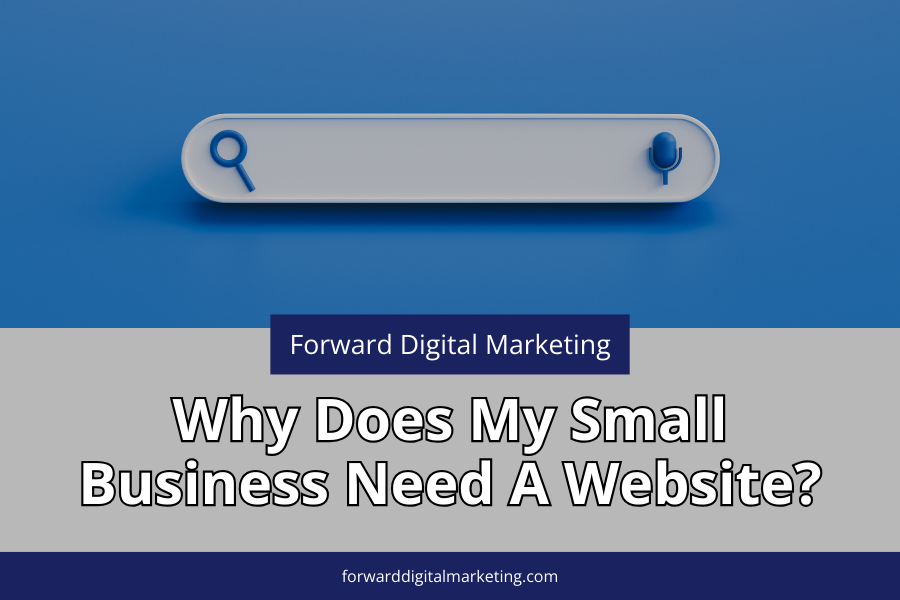
Eight Reasons My Small Business Need a Website?
Here are 8 reasons why your small business and brand need a website:
1. Google needs to know you exist!
If Google knows who you are, then everyone will be able to know who you are! In a world that is condensed onto our digital devices, your consumers are quick to ask a search engine “find a (enter product or service) near me…” and if you are not on Google, you don’t pop up on their radar. Even if you do not host a digital shop online, you should have your business name, products/services offered, contact information, and physical location (if applicable) published online for potential consumers to find! A one-page website is a minimum for any small business or brand!

2. You need to build credibility…
Ever searched for a business online and couldn’t find anything about them? Did you think that was a little… SUS.? Not having a website is a big red flag for consumers and will lead to a downturn in sale conversions and a lack of trust for your brand.
3. Your competition is already doing it.
Your competitors are online and taking your potential consumers! Without an online presence, you cannot build your brand credibility, loyalty, or community, which means you can’t compete or sustain new conversions!
4. Take your store everywhere!
Sure, you may have a physical storefront, but why would you limit yourself to such a small group of customers?! Building a website allows you to create a network of consumers, suppliers, and investors that you normally would not be able to reach.
5. It’s YOUR name on the website!
Sure, you could put your products or services on other platforms, but who is really making the money then? After all of the fees, your net profits are desolated! Why not own your site and keep the money that is rightfully yours. Another plus is it’s your name in the URL. There is no “yourname.theotherbussinessgettingfreeadversting.com“

6. Free advertising!
Speaking of free advertising, that’s what your site is! If you build your website correctly (or better yet, we do it right for you!) you will show up in search engine results! Showing up is just more advertising for you!
7. It shows customers why you’re the right fit for them!
Blogs, “about us” pages and values can all be published on your website. These little things can make a huge difference when a potential consumer is trying to decide between your brand and competitors.
8. It shows customers what great products you sell!
How can a potential customer know what you’re selling if you don’t show them?! Sure they could walk into your store or see your product on a friend, but allowing your consumers a place to scroll through your offerings in one place they can access anywhere will lead to more conversions and greater brand recognition!
Bottom line…
You’re missing out! Having your own website allows you to present your best self, stay relevant, be credible, and reach a whole new audience of potential consumers!
-
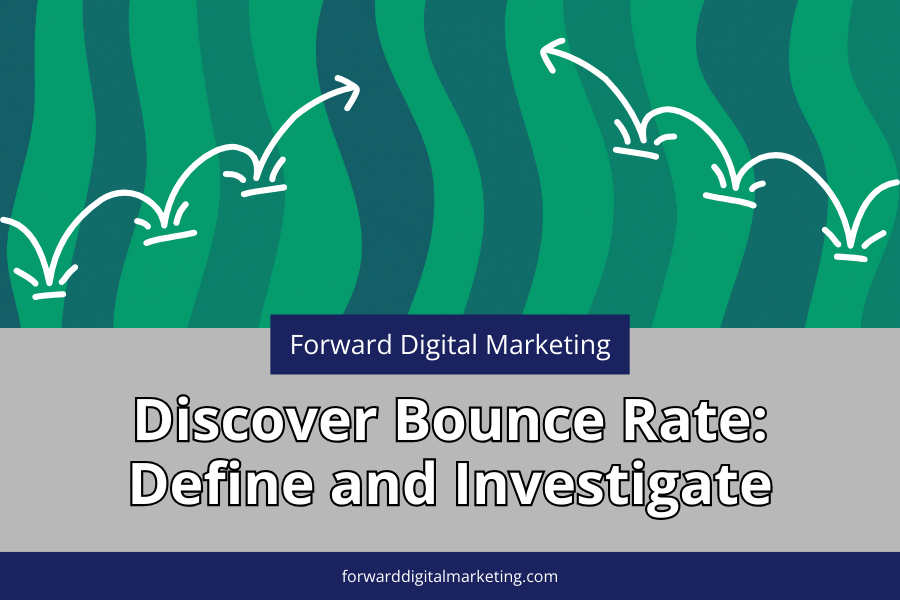
Discover if Your Website Bounce Rate is Good, Great!
Driving traffic to your website is a worthwhile cause! But what happens once they get to your site? Do they stick around or bounce right back off, driving your bounce rate up?
The bounce rate is the percentage of single, individual visitors to a particular website who navigate away from the site after viewing only one page. Your site’s bounce rate is an important insight that gives you a look into how engaging your site content is.
Having a bad bounce rate could indicate there are issues within your website! It could also mean that your content is just not any good. Let’s work through the good, the great, and the could be better bounce rates and learn how to improve yours!

Bounce Rate is Defined as “the percentage of individual visitors to a particular website who navigate away from the site after viewing only one page.” This is different from an exit rate, in which the user only leaves the page, not the site. What’s a Good Bounce Rate?
A good bounce rate is based on your website’s needs, so giving an exact number is not so easy. A bounce rate between 56% to 70% is on the high end, but not the end of the world! If your website is built to drive traffic to other sites, this rate might be right where you need to be!
A bounce rate between 25%-30% is unusually good… but it can happen! Don’t be spoiled by these numbers, because they are not easily maintained. Anything under 40%, that’s not caused by a broken Google Analytics install, is something to be very proud of! This is proof that your website is professionally built, well engaging, and meeting the needs of its users.
Where the majority of good website bounce rates will fall is in the 35%-55% range. Once it starts to creep up towards the 60% range, it’s time to take a look at individual pages’ bounce rates and see what is causing the rate to spike.

How Can I Fix My Website’s High, Climbing Bounce Rates?
So you’re bounce rates still aren’t where you’d like them to be… Here are some things that could be affecting your bounce rate negatively:
- – Your Page Speed is LOW!
- – Annoying, Badly Designed Pop-ups
- – Website is not User Friendly
- – Page, Meta Titles Are Not Optimized
- – Page is Blank, Loading Error
- – Content Lacks Quality…
- – Pages Aren’t Mobile-Friendly– Unnecessary Plugins
- – Google Analytics is not Set-up Correctly
Slow Loading Pages:
The most common contributor to slow loading pages are unoptimized images. If you upload a large photo to your website, just to scale it down, you could be taking up valuable bandwidth space that is slowing down your site!
Poor Design:
When someone enters your site, are they automatically bombarded with large pop-ups, chatbots, or screens held hostage until the user has given you something? Do six invisible videos automatically start playing with sound? Do page buttons only work when you click the text just the right way or does the text wrap in weird ways under images, making it impossible to figure out what you’re trying to tell the audience?! Though all of this may seem extreme and never done on purpose, it could be what is driving your visitors away!
Not Mobile Friendly:
Does your website do all sorts of back flips when a user views it with their mobile phone or tablet? The number one factor is that your website is not mobile responsive! Mobile responsive website automatically correct proportions to fit the screen it is viewed on. Rather than designing layouts that can be “scaled-down,” website designers have to think about each element individually!
Will the text still show up and be legible? How can a user navigate to different pages? Does the mobile site have the same content as the other devices? All of this goes into creating a fully user-friendly mobile site… and which is so important when over 57% of all site visits are now through mobile devices!
Bounce Rate and SEO
Using correct keywords draws in the correct user! If a user is looking for rubber duckies and finds your site, which is selling pineapples, they won’t stick around very long! Maybe your page keyword is “yellow” and when that user is looking up “yellow rubber duckies,” your site pops up! It’s great that your website is found, but it is found by the wrong consumer… by doing the research and optimizing your website pages to the max, you attract individuals who are actually looking for sites like yours! This means they won’t bounce as fast because they are genuinely interested in the products, services, or information you offer.
Bottom Line: Define Your Bounce Rate Goals and Dig In!
The bounce rate is an important analytic to keep your eye on. It may not look like ours, your neighbors, or [insert large corporation here], but that’s because the goal of each website may be different! Be sure to set realistic goals and watch your data to figure out what works and what is driving your audience away. It might be as simple as fixing your keywords, or it could be as complicated as rebuilding poorly performing pages!
Don’t know how to check your bounce rate? Click here so that we can help you set up your Google Analytics! After set up, you’ll be able to monitor bounce rate and way more! Already have Google Analytics set up, but don’t know where the breakdown is? Let’s run a website audit to get you the information you need to optimize!













